Multi-Attribute Decision-Making Methods in Additive Manufacturing: The State of the Art
Abstract
1. Introduction
2. MADM Methods in AM
2.1. AOs in AM
2.1.1. AOs in Part Orientation
2.1.2. AOs in AM-Related Assessment
2.1.3. AOs in Process Selection
2.1.4. AOs in Multiple Problems
2.2. AHP in AM
2.2.1. AHP in Process Selection
2.2.2. AHP in Adhesive Selection
2.2.3. AHP in Part Selection
2.2.4. AHP in Multiple Problems
2.2.5. AHP in Material Selection
2.2.6. AHP in AM-Related Assessment
2.2.7. AHP in Production Scheduling
2.2.8. AHP in Design Selection
2.3. TOPSIS in AM
2.3.1. TOPSIS in Process Selection
2.3.2. TOPSIS in Part Orientation
2.3.3. TOPSIS in AM-Related Assessment
2.3.4. TOPSIS in Parameter Optimisation
2.3.5. TOPSIS in Material Selection
2.4. Other Single Methods in AM
2.4.1. Other Single Methods in Multiple Problems
2.4.2. Other Single Methods in Process Selection
2.4.3. Other Single Methods in Parameter Optimisation
2.4.4. Other Single Methods in Material Selection
2.4.5. Other Single Methods in AM-Related Assessment
2.5. Hybrid Methods in AM
2.5.1. Hybrid Methods in Process Selection
2.5.2. Hybrid Methods in AM-Related Assessment
2.5.3. Hybrid Methods in Multiple Problems
2.5.4. Hybrid Methods in Part Orientation
2.5.5. Hybrid Methods in Material Selection
2.5.6. Hybrid Methods in Parameter Optimisation
3. Statistical Analysis
3.1. Published Journal Articles
3.2. Specific Methods Applied in AM
3.3. Problems Solved by the Methods
4. Discussion of Main Issues
- (1)
- Selection of an MADM method: There are already a large number of available MADM methods in the literature, but there is no guideline or standard to guide how to choose the most suitable method for a specific MADM problem in AM. In existing studies, many different methods are applied to solve the same problem. It is difficult to find the best method for a problem. Therefore, which method to choose usually depends on the knowledge and experience of a user. This places significant requirements on users.
- (2)
- Generation of alternatives: In some MADM problems in AM, the alternatives are not directly available. They need to be obtained via certain approaches. In this case, the quality of the decision-making results depends not only on the MADM methods used, but also on the obtained alternatives. For example, to apply an MADM method to solve the part orientation problem, specific approaches such as feature recognition, convex hull generation, quaternion rotation, and facet clustering need to be used to generate a finite number of alternative orientations first, and then the best orientation can be selected from them using the MADM method. It is not difficult to understand that the quality of the selected orientation is affected by both the generated alternative orientations and the applied MADM method.
- (3)
- Consideration of attributes: For the same MADM problem in AM, different studies may consider different attributes in their decision-making process. This can be very confusing, since there is not a guideline or standard that recommends which attributes each problem should consider.
- (4)
- The determination of the weights of attributes: The weights of attributes quantify their relative importance in producing the decision-making results. A slight variation in the weights could significantly affect the decision-making results. In most studies, the weights of attributes are directly assigned. Generally, it is difficult to assign proper attribute weights, since this needs prior knowledge of how the attributes affect the decision-making results. Furthermore, the considered attributes are usually conflicting or interrelated, which makes the task more complicated. A few studies calculate the attribute weights based on the degrees of importance of the attributes evaluated by domain experts. This way seems more convincing, but it is still highly subjective.
- (5)
- The acquisition of measures of performance: In some MADM problems in AM, the measures of performance of the alternatives with respect to the attributes can only be acquired via the evaluation of domain experts or the prediction of analytical models. The main limitation of the first approach lies in its high degree of subjectivity. For the second approach, it is not easy to build accurate analytical models.
- (6)
- Demonstration of effectiveness: Effectiveness is the most important criterion to evaluate an MADM method in AM. However, a common problem for MADM methods is that demonstrating the effectiveness of a method is usually difficult, as the best ranking for an MADM problem is unknown. In the literature, some studies just illustrate the process of using certain MADM methods to solve AM problems via numerical examples, while others compare the ranking results produced by one method to that generated by several other similar methods. Strictly speaking, neither way is sufficient to verify the effectiveness of the methods used.
- (7)
- Demonstration of efficiency: Efficiency is another important criterion to evaluate an MADM method in AM, especially when the method is applied to large-scale MADM problems in AM. However, this criterion is not considered in most current studies. This may be because the number of alternatives in most MADM problems in AM is not large. However, there are a few problems (e.g., part orientation, parameter optimisation, part selection) where the number of alternatives could be huge, for which it would be of necessity to consider the efficiency of the applied MADM methods.
- (8)
- Integrated MADM: In most existing studies, MADM problems in AM product realisation activities are tackled in an isolate manner. This requires repeated trial and error to realise the performance of an AM product, since the problems in different activities are usually interrelated. To cope with this challenge, an integrated MADM methodology is needed to enable the concurrent design of the material, structure, and process and emphasise their mutual compatibility. However, the existing studies have not developed such a methodology.
- (9)
- Standardisation of the solving process of MADM problems in AM: The standardisation of the MADM process for problems in AM is the basis for realising practical application. However, for the current MADM problems in AM, there is not a problem whose solving process has been standardised.
- (10)
- Integration of MADM methods with commercial software systems: The integration of MADM methods with commercial software systems for AM can greatly facilitate the application of the methods in AM. However, it is unclear how many MADM methods have been implemented in commercial software systems for AM because there is little evidence.
5. Conclusions
Author Contributions
Funding
Institutional Review Board Statement
Informed Consent Statement
Data Availability Statement
Conflicts of Interest
List of Acronyms
| AD | Axiomatic Design |
| AHP | Analytical Hierarchy Process |
| AM | Additive Manufacturing |
| ANP | Analytical Network Process |
| AO | Aggregation Operator |
| BWM | Best–Worst Method |
| CODAS | Combinative Distance-based Assessment |
| COPRAS | Complex Proportional Assessment |
| DEA | Data Envelopment Analysis |
| DEMATEL | Decision Making Trial and Evaluation Laboratory |
| DF | Deviation Function |
| ELECTRE | Elimination Et Choix Traduisant la Réalité |
| FDM | Fused Deposition Modelling |
| FSE | Fuzzy Synthetic Evaluation |
| GRA | Grey Relational Analysis |
| GTMA | Graph Theory and Matrix Approach |
| IEM | Information Entropy Method |
| KVM | Knowledge Value Measuring |
| LN | Linear Normalisation |
| MADM | Multi-Attribute Decision-Making |
| MARCOS | Measurement Alternatives and Ranking According to Compromise Solution |
| MOORA | Multi-Objective Optimisation by Ratio Analysis |
| PIV | Proximity Indexed Value |
| PSI | Preference Selection Index |
| PROMETHEE | Preference Ranking Organisation Method for Enrichment Evaluation |
| SIMA | Similarity-based Approach |
| SLA | Stereolithography |
| SLM | Selective Laser Melting |
| SLS | Selective Laser Sintering |
| SPA | Simple Pair Analysis |
| SWARA | Stepwise Weight Assessment Ratio Analysis |
| 3D | Three-Dimensional |
| 3WDM | Three-Way Decision Model |
| TOPSIS | Technique for Order of Preference by Similarity to Ideal Solution |
| VDI | Verein Deutscher Ingenieure |
| VIKOR | Vlsekriterijuska optimizacija I Komoromisno Resenje |
| WASPAS | Weighted Aggregated Sum Product Assessment |
References
- Tzeng, G.H.; Huang, J.J. Multiple Attribute Decision Making: Methods and Applications; CRC Press: Boca Raton, FL, USA, 2011. [Google Scholar]
- Churchman, C.W.; Ackoff, R.L.; Arnoff, E.L. Introduction to Operations Research; Wiley: Hoboken, NJ, USA, 1957. [Google Scholar]
- Velasquez, M.; Hester, P.T. An analysis of multi-criteria decision making methods. Int. J. Oper. Res. 2013, 10, 56–66. [Google Scholar]
- Aruldoss, M.; Lakshmi, T.M.; Venkatesan, V.P. A Survey on Multi Criteria Decision Making Methods and Its Applications. Am. J. Inf. Syst. 2013, 1, 31–43. [Google Scholar]
- Zavadskas, E.K.; Turskis, Z.; Kildiene, S. State of art surveys of overviews on MCDM/MADM methods. Technol. Econ. Dev. Econ. 2014, 20, 165–179. [Google Scholar] [CrossRef]
- Chua, C.K.; Leong, K.F. 3D Printing and Additive Manufacturing: Principles and Applications (The 5th Edition of Rapid Prototyping: Principles and Applications); World Scientific Publishing: Singapore, 2017. [Google Scholar]
- Gibson, I.; Rosen, D.; Stucker, B.; Khorasani, M. Additive Manufacturing Technologies; Springer: Cham, Switzerland, 2021. [Google Scholar]
- Qin, Y.; Qi, Q.; Scott, P.J.; Jiang, X. Status, comparison, and future of the representations of additive manufacturing data. Comput.-Aided Des. 2019, 111, 44–64. [Google Scholar] [CrossRef]
- Wang, Y.; Blache, R.; Xu, X. Selection of additive manufacturing processes. Rapid Prototyp. J. 2017, 23, 434–447. [Google Scholar] [CrossRef]
- Qin, Y.; Qi, Q.; Shi, P.; Scott, P.J.; Jiang, X. Status, issues, and future of computer-aided part orientation for additive manufacturing. Int. J. Adv. Manuf. Technol. 2021, 115, 1295–1328. [Google Scholar] [CrossRef]
- Pham, D.T.; Dimov, S.S.; Gault, R.S. Part orientation in stereolithography. Int. J. Adv. Manuf. Technol. 1999, 15, 674–682. [Google Scholar] [CrossRef]
- Byun, H.S.; Lee, K.H. Determination of optimal build direction in rapid prototyping with variable slicing. Int. J. Adv. Manuf. Technol. 2006, 28, 307–313. [Google Scholar] [CrossRef]
- Byun, H.S.; Lee, K.H. Determination of the optimal build direction for different rapid prototyping processes using multi-criterion decision making. Robot. Comput.-Integr. Manuf. 2006, 22, 69–80. [Google Scholar] [CrossRef]
- Al-Ahmari, A.M.; Abdulhameed, O.; Khan, A.A. An automatic and optimal selection of parts orientation in additive manufacturing. Rapid Prototyp. J. 2018, 24, 698–708. [Google Scholar] [CrossRef]
- Qie, L.; Jing, S.; Lian, R.; Chen, Y.; Liu, J. Quantitative suggestions for build orientation selection. Int. J. Adv. Manuf. Technol. 2018, 98, 1831–1845. [Google Scholar] [CrossRef]
- Zhang, Y.; Harik, R.; Fadel, G.; Bernard, A. A statistical method for build orientation determination in additive manufacturing. Rapid Prototyp. J. 2019, 25, 187–207. [Google Scholar] [CrossRef]
- Qin, Y.; Qi, Q.; Scott, P.J.; Jiang, X. Determination of optimal build orientation for additive manufacturing using Muirhead mean and prioritised average operators. J. Intell. Manuf. 2019, 30, 3015–3034. [Google Scholar] [CrossRef]
- Moreno-Cabezali, B.M.; Fernandez-Crehuet, J.M. Application of a fuzzy-logic based model for risk assessment in additive manufacturing R&D projects. Comput. Ind. Eng. 2020, 145, 106529. [Google Scholar]
- Qin, Y.; Qi, Q.; Scott, P.J.; Jiang, X. An additive manufacturing process selection approach based on fuzzy Archimedean weighted power Bonferroni aggregation operators. Robot. Comput.-Integr. Manuf. 2020, 64, 101926. [Google Scholar] [CrossRef]
- Qin, Y.; Qi, Q.; Shi, P.; Scott, P.J.; Jiang, X. Linguistic interval-valued intuitionistic fuzzy Archimedean prioritised aggregation operators for multi-criteria decision making. J. Intell. Fuzzy Syst. 2020, 38, 4643–4666. [Google Scholar] [CrossRef]
- Qin, Y.; Cui, X.; Huang, M.; Zhong, Y.; Tang, Z.; Shi, P. Linguistic Interval-Valued Intuitionistic Fuzzy Archimedean Power Muirhead Mean Operators for Multi-Attribute Group Decision Making. Complexity 2020, 2020, 2373762. [Google Scholar] [CrossRef]
- Huang, M.; Chen, L.; Zhong, Y.; Qin, Y. A generic method for multi-criterion decision-making problems in design for additive manufacturing. Int. J. Adv. Manuf. Technol. 2021, 115, 2083–2095. [Google Scholar] [CrossRef]
- Braglia, M.; Petroni, A. A management-support technique for the selection of rapid prototyping technologies. J. Ind. Technol. 1999, 15, 2–6. [Google Scholar]
- Armillotta, A. Selection of layered manufacturing techniques by an adaptive AHP decision model. Robot. Comput.-Integr. Manuf. 2008, 24, 450–461. [Google Scholar] [CrossRef]
- Lokesh, K.; Jain, P.K. Selection of rapid prototyping technology. Adv. Prod. Eng. Manag. 2010, 5, 75–84. [Google Scholar]
- Mancanares, C.G.; de S Zancul, E.; Cavalcante da Silva, J.; Cauchick Miguel, P.A. Additive manufacturing process selection based on parts’ selection criteria. Int. J. Adv. Manuf. Technol. 2015, 80, 1007–1014. [Google Scholar] [CrossRef]
- Liu, W.; Zhu, Z.; Ye, S. A decision-making methodology integrated in product design for additive manufacturing process selection. Rapid Prototyp. J. 2020, 26, 895–909. [Google Scholar] [CrossRef]
- Bikas, H.; Porevopoulos, N.; Stavropoulos, P. A decision support method for knowledge-based Additive Manufacturing process selection. Procedia CIRP 2021, 104, 1650–1655. [Google Scholar] [CrossRef]
- Psarommatis, F.; Vosniakos, G.C. Systematic Development of a Powder Deposition System for an Open Selective Laser Sintering Machine Using Analytic Hierarchy Process. J. Manuf. Mater. Process. 2022, 6, 22. [Google Scholar] [CrossRef]
- Raja, S.; Rajan, A.J.; Praveen Kumar, V.; Rajeswari, N.; Girija, M.; Modak, S.; Vinoth Kumar, R.; Mammo, W.D. Selection of Additive Manufacturing Machine Using Analytical Hierarchy Process. Sci. Program. 2022, 2022, 1596590. [Google Scholar] [CrossRef]
- Arenas, J.M.; Alia, C.; Blaya, F.; Sanz, A. Multi-criteria selection of structural adhesives to bond ABS parts obtained by rapid prototyping. Int. J. Adhes. Adhes. 2012, 33, 67–74. [Google Scholar] [CrossRef]
- Knofius, N.; Van der Heijden, M.C.; Zijm, W.H.M. Selecting parts for additive manufacturing in service logistics. J. Manuf. Technol. Manag. 2016, 27, 915–931. [Google Scholar] [CrossRef]
- Muvunzi, R.; Mpofu, K.; Daniyan, I. An Evaluation Model for Selecting Part Candidates for Additive Manufacturing in the Transport Sector. Metals 2021, 11, 765. [Google Scholar] [CrossRef]
- Foshammer, J.; Soberg, P.V.; Helo, P.; Ituarte, I.F. Identification of aftermarket and legacy parts suitable for additive manufacturing: A knowledge management-based approach. Int. J. Prod. Econ. 2022, 253, 108573. [Google Scholar] [CrossRef]
- Uz Zaman, U.K.; Rivette, M.; Siadat, A.; Mousavi, S.M. Integrated product-process design: Material and manufacturing process selection for additive manufacturing using multi-criteria decision making. Robot. Comput.-Integr. Manuf. 2018, 51, 169–180. [Google Scholar] [CrossRef]
- Hodonou, C.; Balazinski, M.; Brochu, M.; Mascle, C. Material-design-process selection methodology for aircraft structural components: Application to additive vs. subtractive manufacturing processes. Int. J. Adv. Manuf. Technol. 2019, 103, 1509–1517. [Google Scholar] [CrossRef]
- Kadkhoda-Ahmadi, S.; Hassan, A.; Asadollahi-Yazdi, E. Process and resource selection methodology in design for additive manufacturing. Int. J. Adv. Manuf. Technol. 2019, 104, 2013–2029. [Google Scholar] [CrossRef]
- Alghamdy, M.; Ahmad, R.; Alsayyed, B. Material selection methodology for additive manufacturing applications. Procedia CIRP 2019, 84, 486–490. [Google Scholar] [CrossRef]
- Foteinopoulos, P.; Papacharalampopoulos, A.; Stavropoulos, P. Block-based analytical hierarchy process applied for the evaluation of construction sector additive manufacturing. Procedia CIRP 2019, 81, 950–955. [Google Scholar] [CrossRef]
- Sonar, H.C.; Khanzode, V.V.; Akarte, M.M. Ranking of additive manufacturing implementation factors using analytic hierarchy process (AHP). J. Inst. Eng. Ser. C 2021, 102, 421–426. [Google Scholar] [CrossRef]
- Bappy, M.M.; Key, J.; Hossain, N.U.I.; Jaradat, R. Assessing the Social Impacts of Additive Manufacturing Using Hierarchical Evidential Reasoning Approach. Glob. J. Flex. Syst. Manag. 2022, 23, 201–220. [Google Scholar] [CrossRef]
- Ransikarbum, K.; Pitakaso, R.; Kim, N. A decision-support model for additive manufacturing scheduling using an integrative analytic hierarchy process and multi-objective optimization. Appl. Sci. 2020, 10, 5159. [Google Scholar] [CrossRef]
- Rochman, D.D.; Anwar, A.; Riki Margana, R. 3D Print COVID-19 Mask Design Selection using Analytical Hierarchy Process. Solid State Technol. 2020, 63, 3127–3136. [Google Scholar]
- Vahdani, B.; Mousavi, S.M.; Tavakkoli-Moghaddam, R. Group decision making based on novel fuzzy modified TOPSIS method. Appl. Math. Model. 2011, 35, 4257–4269. [Google Scholar] [CrossRef]
- Ic, Y.T. An experimental design approach using TOPSIS method for the selection of computer-integrated manufacturing technologies. Robot. Comput.-Integr. Manuf. 2012, 28, 245–256. [Google Scholar] [CrossRef]
- Yildiz, A.; Ugur, L. Evaluation of 3D printers used in additive manufacturing by using interval type-2 fuzzy TOPSIS method. J. Eng. Res. Appl. Sci. 2018, 7, 984–993. [Google Scholar]
- Yu, C.; Qie, L.; Jing, S.; Yan, Y. Personalized design of part orientation in additive manufacturing. Rapid Prototyp. J. 2019, 25, 1647–1660. [Google Scholar] [CrossRef]
- Priarone, P.C.; Pagone, E.; Martina, F.; Catalano, A.R.; Settineri, L. Multi-criteria environmental and economic impact assessment of wire arc additive manufacturing. CIRP Ann. 2020, 69, 37–40. [Google Scholar] [CrossRef]
- Saxena, P.; Pagone, E.; Salonitis, K.; Jolly, M.R. Sustainability metrics for rapid manufacturing of the sand casting moulds: A multi-criteria decision-making algorithm-based approach. J. Clean. Prod. 2021, 311, 127506. [Google Scholar] [CrossRef]
- Raja, S.; Rajan, A.J. A decision-making model for selection of the suitable FDM machine using fuzzy TOPSIS. Math. Probl. Eng. 2022, 2022, 7653292. [Google Scholar] [CrossRef]
- Alsaadi, N. Prioritization of Challenges for the Effectuation of Sustainable Additive Manufacturing: A Case Study Approach. Processes 2021, 9, 2250. [Google Scholar] [CrossRef]
- Agrawal, R. Sustainable design guidelines for additive manufacturing applications. Rapid Prototyp. J. 2022, 28, 1221–1240. [Google Scholar] [CrossRef]
- Kamaal, M.; Anas, M.; Rastogi, H.; Bhardwaj, N.; Rahaman, A. Effect of FDM process parameters on mechanical properties of 3D-printed carbon fibre–PLA composite. Prog. Addit. Manuf. 2021, 6, 63–69. [Google Scholar] [CrossRef]
- Sugavaneswaran, M.; Prashanthi, B.; Rajan, J. A multi-criteria decision making method for vapor smoothening fused deposition modelling part. Rapid Prototyp. J. 2021, 28, 236–252. [Google Scholar]
- Kumar, S.; Singh, R.; Singh, T.P.; Batish, A. On twin screw extrusion parametric optimisation using hybrid approach of ANOVA and TOPSIS for 3D printing applications. Adv. Mater. Process. Technol. 2022. [Google Scholar] [CrossRef]
- Jha, M.K.; Gupta, S.; Chaudhary, V.; Gupta, P. Material selection for biomedical application in additive manufacturing using TOPSIS approach. Mater. Today Proc. 2022, 62, 1452–1457. [Google Scholar] [CrossRef]
- West, A.P.; Sambu, S.P.; Rosen, D.W. A process planning method for improving build performance in stereolithography. Comput.-Aided Des. 2001, 33, 65–79. [Google Scholar] [CrossRef]
- Roberson, D.A.; Espalin, D.; Wicker, R.B. 3D printer selection: A decision-making evaluation and ranking model. Virtual Phys. Prototyp. 2013, 8, 201–212. [Google Scholar] [CrossRef]
- Lan, H.; Ding, Y.; Hong, J. Decision support system for rapid prototyping process selection through integration of fuzzy synthetic evaluation and an expert system. Int. J. Prod. Res. 2005, 43, 169–194. [Google Scholar] [CrossRef]
- Khrais, S.; Al-Hawari, T.; Al-Araidah, O. A fuzzy logic application for selecting layered manufacturing techniques. Expert Syst. Appl. 2011, 38, 10286–10291. [Google Scholar] [CrossRef]
- Rao, R.V.; Padm, K.K. Rapid prototyping process selection using graph theory and matrix approach. J. Mater. Process. Technol. 2007, 194, 81–88. [Google Scholar] [CrossRef]
- Chakraborty, S. Applications of the MOORA method for decision making in manufacturing environment. Int. J. Adv. Manuf. Technol. 2011, 54, 1155–1166. [Google Scholar] [CrossRef]
- Zhang, Y.; Xu, Y.; Bernard, A. A new decision support method for the selection of RP process: Knowledge value measuring. Int. J. Comput. Integr. Manuf. 2014, 27, 747–758. [Google Scholar] [CrossRef]
- Vinodh, S.; Nagaraj, S.; Girubha, J. Application of fuzzy VIKOR for selection of rapid prototyping technologies in an agile environment. Rapid Prototyp. J. 2014, 20, 523–532. [Google Scholar] [CrossRef]
- Raykar, S.J.; D’Addona, D.M. Selection of best printing parameters of fused deposition modeling using VIKOR. Mater. Today Proc. 2020, 27, 344–347. [Google Scholar] [CrossRef]
- Deomore, S.A.; Raykar, S.J. Multi-criteria decision making paradigm for selection of best printing parameters of fused deposition modeling. Mater. Today Proc. 2021, 44, 2562–2565. [Google Scholar] [CrossRef]
- Makhesana, M.A. Application of improved complex proportional assessment (COPRAS) method for rapid prototyping system selection. Rapid Prototyp. J. 2015, 21, 671–674. [Google Scholar] [CrossRef]
- Gitinavard, H.; Mousavi, S.M.; Vahdani, B. Soft computing-based new interval-valued hesitant fuzzy multi-criteria group assessment method with last aggregation to industrial decision problems. Soft Comput. 2017, 21, 3247–3265. [Google Scholar] [CrossRef]
- Kumar, V.; Kumar, L.; Haleem, A. Selection of rapid prototyping technology using an ANP based approach. IOSR J. Mech. Civ. Eng. 2016, 13, 71–78. [Google Scholar] [CrossRef]
- Zheng, P.; Wang, Y.; Xu, X.; Xie, S.Q. A weighted rough set based fuzzy axiomatic design approach for the selection of AM processes. Int. J. Adv. Manuf. Technol. 2017, 91, 1977–1990. [Google Scholar] [CrossRef]
- Exconde, M.K.J.E.; Co, J.A.A.; Manapat, J.Z.; Magdaluyo, E.R., Jr. Materials selection of 3D printing filament and utilization of recycled polyethylene terephthalate (PET) in a redesigned breadboard. Procedia CIRP 2019, 84, 28–32. [Google Scholar] [CrossRef]
- Patel, P.B.; Patel, J.D.; Maniya, K.D. Application of PSI methods to select FDM process parameter for polylactic acid. Mater. Today Proc. 2018, 5, 4022–4028. [Google Scholar] [CrossRef]
- Prabhu, S.R.; Ilangkumaran, M.; Mohanraj, T. 3D Printing of automobile spoilers using MCDM techniques. Mater. Test. 2020, 62, 1121–1125. [Google Scholar] [CrossRef]
- Palanisamy, M.; Pugalendhi, A.; Ranganathan, R. Selection of suitable additive manufacturing machine and materials through best–worst method (BWM). Int. J. Adv. Manuf. Technol. 2020, 107, 2345–2362. [Google Scholar] [CrossRef]
- Agrawal, R.; Vinodh, S. Prioritisation of drivers of sustainable additive manufacturing using best worst method. Int. J. Sustain. Eng. 2021, 14, 1587–1603. [Google Scholar] [CrossRef]
- Qin, Y.; Qi, Q.; Shi, P.; Scott, P.J.; Jiang, X. A multi-criterion three-way decision-making method under linguistic interval-valued intuitionistic fuzzy environment. J. Ambient. Intell. Humaniz. Comput. 2022. [Google Scholar] [CrossRef]
- Qin, Y.; Qi, Q.; Shi, P.; Scott, P.J.; Jiang, X. Selection of materials in metal additive manufacturing via three-way decision-making. Int. J. Adv. Manuf. Technol. 2023. [Google Scholar]
- Byun, H.S.; Lee, K.H. A decision support system for the selection of a rapid prototyping process using the modified TOPSIS method. Int. J. Adv. Manuf. Technol. 2005, 26, 1338–1347. [Google Scholar] [CrossRef]
- Borille, A.; Gomes, J.; Meyer, R.; Grote, K. Applying decision methods to select rapid prototyping technologies. Rapid Prototyp. J. 2010, 16, 50–62. [Google Scholar] [CrossRef]
- Rao, R.V.; Patel, B.K. Decision making in the manufacturing environment using an improved PROMETHEE method. Int. J. Prod. Res. 2010, 48, 4665–4682. [Google Scholar]
- Mahapatra, S.S.; Panda, B.N. Benchmarking of rapid prototyping systems using grey relational analysis. Int. J. Serv. Oper. Manag. 2013, 16, 460–477. [Google Scholar] [CrossRef]
- Liao, S.; Wu, M.J.; Huang, C.Y.; Kao, Y.S.; Lee, T.H. Evaluating and enhancing three-dimensional printing service providers for rapid prototyping using the DEMATEL based network process and VIKOR. Math. Probl. Eng. 2014, 2014, 349348. [Google Scholar] [CrossRef]
- Zhang, Y.; Bernard, A. An integrated decision-making model for multi-attributes decision-making (MADM) problems in additive manufacturing process planning. Rapid Prototyp. J. 2014, 20, 377–389. [Google Scholar] [CrossRef]
- Paul, D.; Agarwal, P.; Mondal, G.; Banerjee, D. A comparative analysis of different hybrid MCDM techniques considering a case of selection of 3D printers. Manag. Sci. Lett. 2015, 5, 695–708. [Google Scholar] [CrossRef]
- Vimal, K.E.K.; Vinodh, S.; Brajesh, P.; Muralidharan, R. Rapid prototyping process selection using multi criteria decision making considering environmental criteria and its decision support system. Rapid Prototyp. J. 2016, 22, 225–250. [Google Scholar]
- Zhang, Y.; Bernard, A.; Gupta, R.K.; Harik, R. Feature based building orientation optimization for additive manufacturing. Rapid Prototyp. J. 2016, 22, 358–376. [Google Scholar] [CrossRef]
- Cetinkaya, C.; Kabak, M.; Ozceylan, E. 3D printer selection by using fuzzy analytic hierarchy process and PROMETHEE. Int. J. Inform. Technol. 2017, 10, 371–380. [Google Scholar]
- Cruz, M.F.; Borille, A.V. Decision methods application to compare conventional manufacturing process with metal additive manufacturing process in the aerospace industry. J. Braz. Soc. Mech. Sci. Eng. 2017, 39, 177–193. [Google Scholar] [CrossRef]
- Anand, M.B.; Vinodh, S. Application of fuzzy AHP–TOPSIS for ranking additive manufacturing processes for microfabrication. Rapid Prototyp. J. 2018, 24, 424–435. [Google Scholar]
- Wang, Y.; Zhong, R.Y.; Xu, X. A decision support system for additive manufacturing process selection using a hybrid multiple criteria decision-making method. Rapid Prototyp. J. 2018, 24, 1544–1553. [Google Scholar] [CrossRef]
- Moiduddin, K.; Mian, S.H.; Alkhalefah, H.; Umer, U. Decision advisor based on uncertainty theories for the selection of rapid prototyping system. J. Intell. Fuzzy Syst. 2019, 37, 3897–3923. [Google Scholar] [CrossRef]
- Prabhu, S.R.; Ilangkumaran, M. Decision making methodology for the selection of 3D printer under fuzzy environment. Int. J. Mater. Prod. Technol. 2019, 59, 239–252. [Google Scholar] [CrossRef]
- Prabhu, S.R.; Ilangkumaran, M. Selection of 3D printer based on FAHP integrated with GRA-TOPSIS. Int. J. Mater. Prod. Technol. 2019, 58, 155–177. [Google Scholar] [CrossRef]
- Wang, Y.C.; Chen, T.; Yeh, Y.L. Advanced 3D printing technologies for the aircraft industry: A fuzzy systematic approach for assessing the critical factors. Int. J. Adv. Manuf. Technol. 2019, 105, 4059–4069. [Google Scholar] [CrossRef]
- Raigar, J.; Sharma, V.S.; Srivastava, S.; Chand, R.; Singh, J. A decision support system for the selection of an additive manufacturing process using a new hybrid MCDM technique. Sadhana 2020, 45, 101. [Google Scholar] [CrossRef]
- Zhang, H.; Wu, Y.; Wang, K.; Peng, Y.; Wang, D.; Yao, S.; Wang, J. Materials selection of 3D-printed continuous carbon fiber reinforced composites considering multiple criteria. Mater. Des. 2020, 196, 109140. [Google Scholar] [CrossRef]
- Agrawal, R. Sustainable material selection for additive manufacturing technologies: A critical analysis of rank reversal approach. J. Clean. Prod. 2021, 296, 126500. [Google Scholar] [CrossRef]
- Qin, Y.; Qi, Q.; Shi, P.; Scott, P.J.; Jiang, X. Automatic determination of part build orientation for laser powder bed fusion. Virtual Phys. Prototyp. 2021, 16, 29–49. [Google Scholar] [CrossRef]
- Ransikarbum, K.; Khamhong, P. Integrated fuzzy analytic hierarchy process and technique for order of preference by similarity to ideal solution for additive manufacturing printer selection. J. Mater. Eng. Perform. 2021, 30, 6481–6492. [Google Scholar] [CrossRef]
- Ransikarbum, K.; Pitakaso, R.; Kim, N.; Ma, J. Multicriteria decision analysis framework for part orientation analysis in additive manufacturing. J. Comput. Des. Eng. 2021, 8, 1141–1157. [Google Scholar] [CrossRef]
- Sakthivel, M.R.; Vinodh, S. Parametric optimization of fused deposition modelling process using Grey based Taguchi and TOPSIS methods for an automotive component. Rapid Prototyp. J. 2021, 27, 155–175. [Google Scholar]
- Zhang, C.; Zhang, C.; Zhuang, J.; Han, H.; Yuan, B.; Liu, J.; Yang, K.; Zhuang, S.; Li, R. Evaluation of Cloud 3D Printing Order Task Execution Based on the AHP-TOPSIS Optimal Set Algorithm and the Baldwin Effect. Micromachines 2021, 12, 801. [Google Scholar] [CrossRef]
- Algunaid, K.M.A.; Liu, J. Decision support system to select a 3D printing process/machine and material from a large-scale options pool. Int. J. Adv. Manuf. Technol. 2022, 121, 7643–7659. [Google Scholar] [CrossRef]
- Chandra, M.; Shahab, F.; Vimal, K.E.K.; Rajak, S. Selection for additive manufacturing using hybrid MCDM technique considering sustainable concepts. Rapid Prototyp. J. 2022, 28, 1297–1311. [Google Scholar] [CrossRef]
- Koli, Y.; Arora, S.; Ahmad, S.; Yuvaraj, N.; Khan, Z.A. Investigations and Multi-response Optimization of Wire Arc Additive Manufacturing Cold Metal Transfer Process Parameters for Fabrication of SS308L Samples. J. Mater. Eng. Perform. 2022. [Google Scholar] [CrossRef]
- Malaga, A.K.; Agrawal, R.; Wankhede, V.A. Material selection for metal additive manufacturing process. Mater. Today Proc. 2022, 66, 1744–1749. [Google Scholar] [CrossRef]
- Mastura, M.; Nadlene, R.; Jumaidin, R.; Kudus, S.A.; Mansor, M.; Firdaus, H. Concurrent Material Selection of Natural Fibre Filament for Fused Deposition Modeling Using Integration of Analytic Hierarchy Process/Analytic Network Process. J. Renew. Mater. 2022, 10, 1221. [Google Scholar] [CrossRef]
- Patil, P.; Singh, D.; Raykar, S.J.; Bhamu, J. Multi-objective optimisation and analysis of fused deposition modelling parameters: Best infill patterns. Int. J. Six Sigma Compet. Advant. 2022, 14, 18–31. [Google Scholar] [CrossRef]
- Sheng, H.; Xu, J.; Zhang, S.; Tan, J. Build orientation optimization for extrusion-based additive manufacturing coupling with adaptive slicing. Int. J. Adv. Manuf. Technol. 2022, 123, 1133–1158. [Google Scholar] [CrossRef]
- Yoris-Nobile, A.I.; Lizasoain-Arteaga, E.; Slebi-Acevedo, C.J.; Blanco-Fernandez, E.; Alonso-Canon, S.; Indacoechea-Vega, I.; Castro-Fresno, D. Life cycle assessment (LCA) and multi-criteria decision-making (MCDM) analysis to determine the performance of 3D printed cement mortars and geopolymers. J. Sustain. Cem.-Based Mater. 2022. [Google Scholar] [CrossRef]
- Framinan, J.M.; Perez-Gonzalez, P.; Fernandez-Viagas, V. An overview on the use of operations research in additive manufacturing. Ann. Oper. Res. 2022. [Google Scholar] [CrossRef]
- Rai, C.; Bhanuprakash, S.; Kianian, B.; Stahl, J.E. Additive Manufacturing Decision Support Systems: A Systematic Literature Review Discerning Current and Future Directions. In Proceedings of the 10th Swedish Production Symposium, Skövde, Sweden, 26–29 April 2022; IOS Press: Amsterdam, The Netherlands, 2022; Volume 21, pp. 553–565. [Google Scholar]
- Beliakov, G.; Pradera, A.; Calvo, T. Aggregation Functions: A Guide for Practitioners; Springer: Berlin, Germany, 2007. [Google Scholar]
- Saaty, T.L. How to make a decision: The analytic hierarchy process. Eur. J. Oper. Res. 1990, 48, 9–26. [Google Scholar] [CrossRef]
- Hwang, C.L.; Yoon, K. Multiple Attribute Decision Making: Methods and Applications A State-of-the-Art Survey; Springer: Berlin, Germany, 1981. [Google Scholar]
- Schervish, M.J. Theory of Statistics; Springer Science & Business Media: Berlin/Heidelberg, Germany, 2012. [Google Scholar]
- Zadeh, L.A. Fuzzy sets. Inf. Control 1965, 8, 338–353. [Google Scholar] [CrossRef]
- Rao, R.V. A material selection model using graph theory and matrix approach. Mater. Sci. Eng. A 2006, 431, 248–255. [Google Scholar] [CrossRef]
- Brauers, W.K.; Zavadskas, E.K. The MOORA method and its application to privatization in a transition economy. Control Cybern. 2006, 35, 445–469. [Google Scholar]
- Lee, C.C.; Yang, J. Knowledge value chain. J. Manag. Dev. 2000, 19, 783–794. [Google Scholar]
- Duckstein, L.; Opricovic, S. Multiobjective optimization in river basin development. Water Resour. Res. 1980, 16, 14–20. [Google Scholar] [CrossRef]
- Zavadskas, E.K.; Kaklauskas, A.; Peldschus, F.; Turskis, Z. Multi-attribute assessment of road design solutions by using the COPRAS method. Balt. J. Road Bridge Eng. 2007, 2, 195–203. [Google Scholar]
- Saaty, T.L. Decision Making with Dependence and Feedback: The Analytic Network Process; RWS Publications: Pittsburgh, PA, USA, 1996. [Google Scholar]
- Suh, N.P.; Suh, N.P. Axiomatic Design: Advances and Applications; Oxford University Press: Oxford, UK, 2001. [Google Scholar]
- Figueira, J.R.; Mousseau, V.; Roy, B. ELECTRE Methods. In Multiple Criteria Decision Analysis; Springer: Berlin/Heidelberg, Germany, 2016; pp. 155–185. [Google Scholar]
- Maniya, K.; Bhatt, M.G. A selection of material using a novel type decision-making method: Preference selection index method. Mater. Des. 2010, 31, 1785–1789. [Google Scholar] [CrossRef]
- Rezaei, J. Best-worst multi-criteria decision-making method. Omega 2015, 53, 49–57. [Google Scholar] [CrossRef]
- Yao, Y. Three-way decisions with probabilistic rough sets. Inf. Sci. 2010, 180, 341–353. [Google Scholar] [CrossRef]
- Gomes, J.O.; Vallejos, R.V. Applying a benchmarking method to organize the product lifecycle management for aeronautic suppliers. In Proceedings of the 4th International Conference on Product Lifecycle Management, Shanghai, China, 16–20 September 2007; Volume 1, pp. 3–10. [Google Scholar]
- Konstruktionsmethodik: Technisch-Witschaftliches Konstruiren, Tech Nischwitschaftliche Bewertung; Standard; Verein Deutscher Ingenieure: Düsseldorf, Germany, 1998.
- Brans, J.P.; Vincke, P.; Mareschal, B. How to select and how to rank projects: The PROMETHEE method. Eur. J. Oper. Res. 1986, 24, 228–238. [Google Scholar] [CrossRef]
- Deng, J. Introduction to grey system theory. J. Grey Syst. 1989, 1, 1–24. [Google Scholar]
- Gabus, A.; Fontela, E. World problems, an invitation to further thought within the framework of DEMATEL. Battelle Geneva Res. Cent. 1972, 1, 1–8. [Google Scholar]
- Deng, H. A Similarity-Based Approach to Ranking Multicriteria Alternatives. In Proceedings of the 2007 International Conference on Intelligent Computing, Qingdao, China, 21–24 August 2007; Springer: Berlin/Heidelberg, Germany, 2007; pp. 253–262. [Google Scholar]
- Mufazzal, S.; Muzakkir, S.M. A new multi-criterion decision making (MCDM) method based on proximity indexed value for minimizing rank reversals. Comput. Ind. Eng. 2018, 119, 427–438. [Google Scholar] [CrossRef]
- Cooper, W.W.; Seiford, L.M.; Zhu, J. Handbook on Data Envelopment Analysis; Springer Science & Business Media: Berlin/Heidelberg, Germany, 2011. [Google Scholar]
- Jahan, A.; Edwards, K.L. A state-of-the-art survey on the influence of normalization techniques in ranking: Improving the materials selection process in engineering design. Mater. Des. 2015, 65, 335–342. [Google Scholar] [CrossRef]
- Kersuliene, V.; Zavadskas, E.K.; Turskis, Z. Selection of rational dispute resolution method by applying new step-wise weight assessment ratio analysis (SWARA). J. Bus. Econ. Manag. 2010, 11, 243–258. [Google Scholar] [CrossRef]
- Stevic, Z.; Pamucar, D.; Puska, A.; Chatterjee, P. Sustainable supplier selection in healthcare industries using a new MCDM method: Measurement of alternatives and ranking according to COmpromise solution (MARCOS). Comput. Ind. Eng. 2020, 140, 106231. [Google Scholar] [CrossRef]
- Shannon, C.E. A mathematical theory of communication. Bell Syst. Tech. J. 1948, 27, 379–423. [Google Scholar] [CrossRef]
- Keshavarz Ghorabaee, M.; Zavadskas, E.K.; Turskis, Z.; Antucheviciene, J. A new combinative distance-based assessment (CODAS) method for multi-criteria decision-making. Econ. Comput. Econ. Cybern. Stud. Res. 2016, 50, 25–44. [Google Scholar]
- Zavadskas, E.K.; Turskis, Z.; Antucheviciene, J.; Zakarevicius, A. Optimization of weighted aggregated sum product assessment. Electron. Electr. 2012, 122, 3–6. [Google Scholar] [CrossRef]
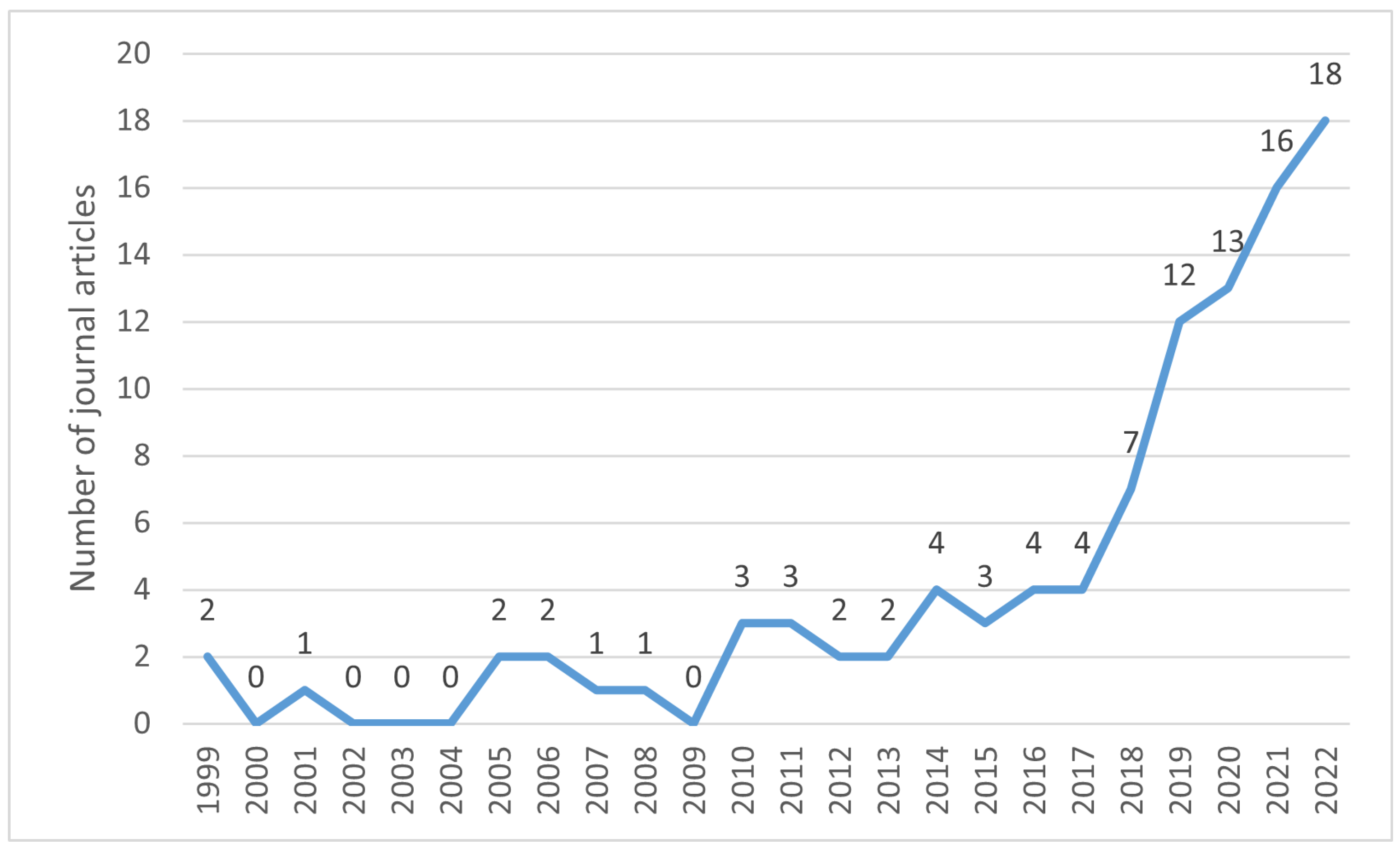
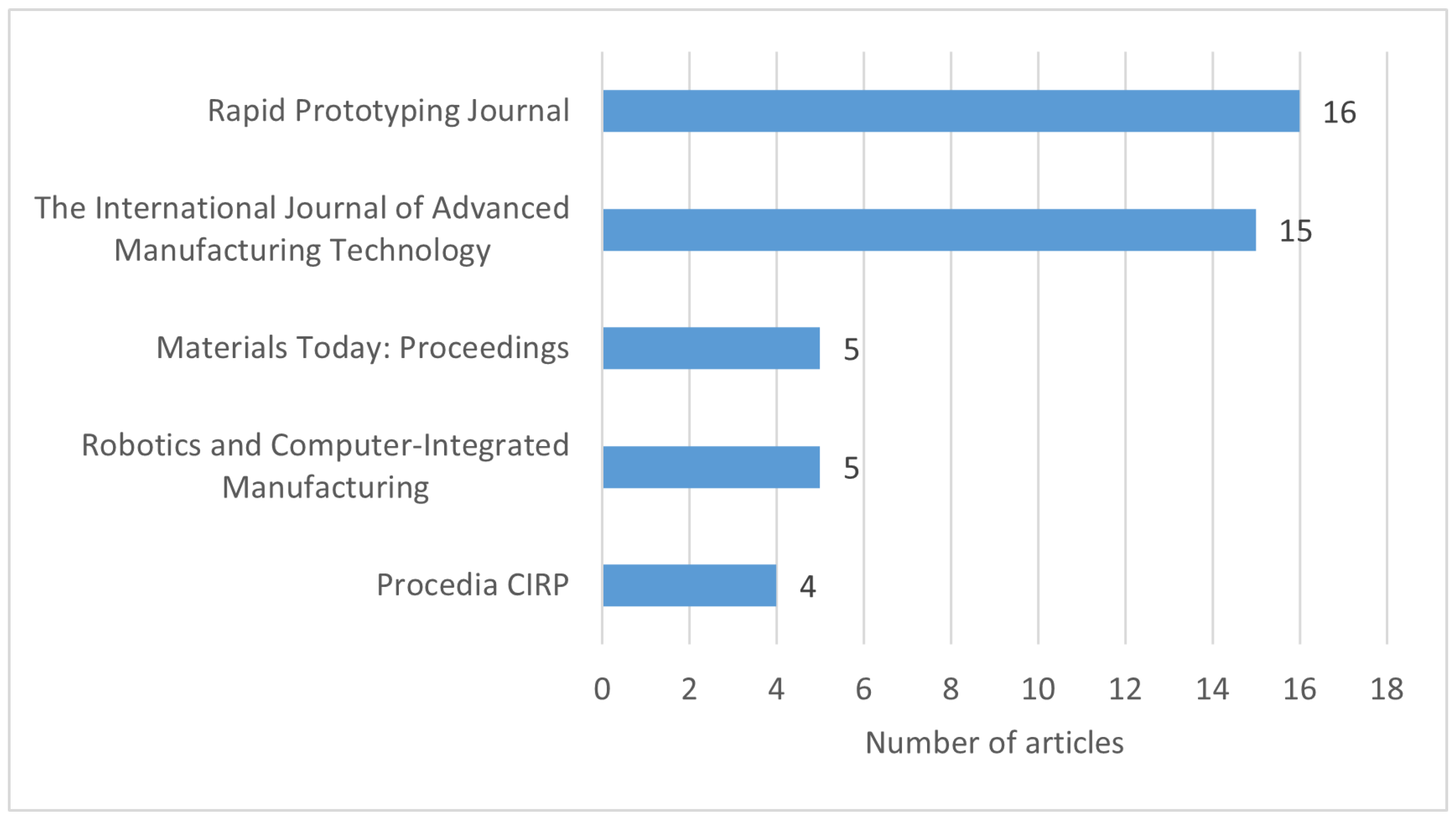
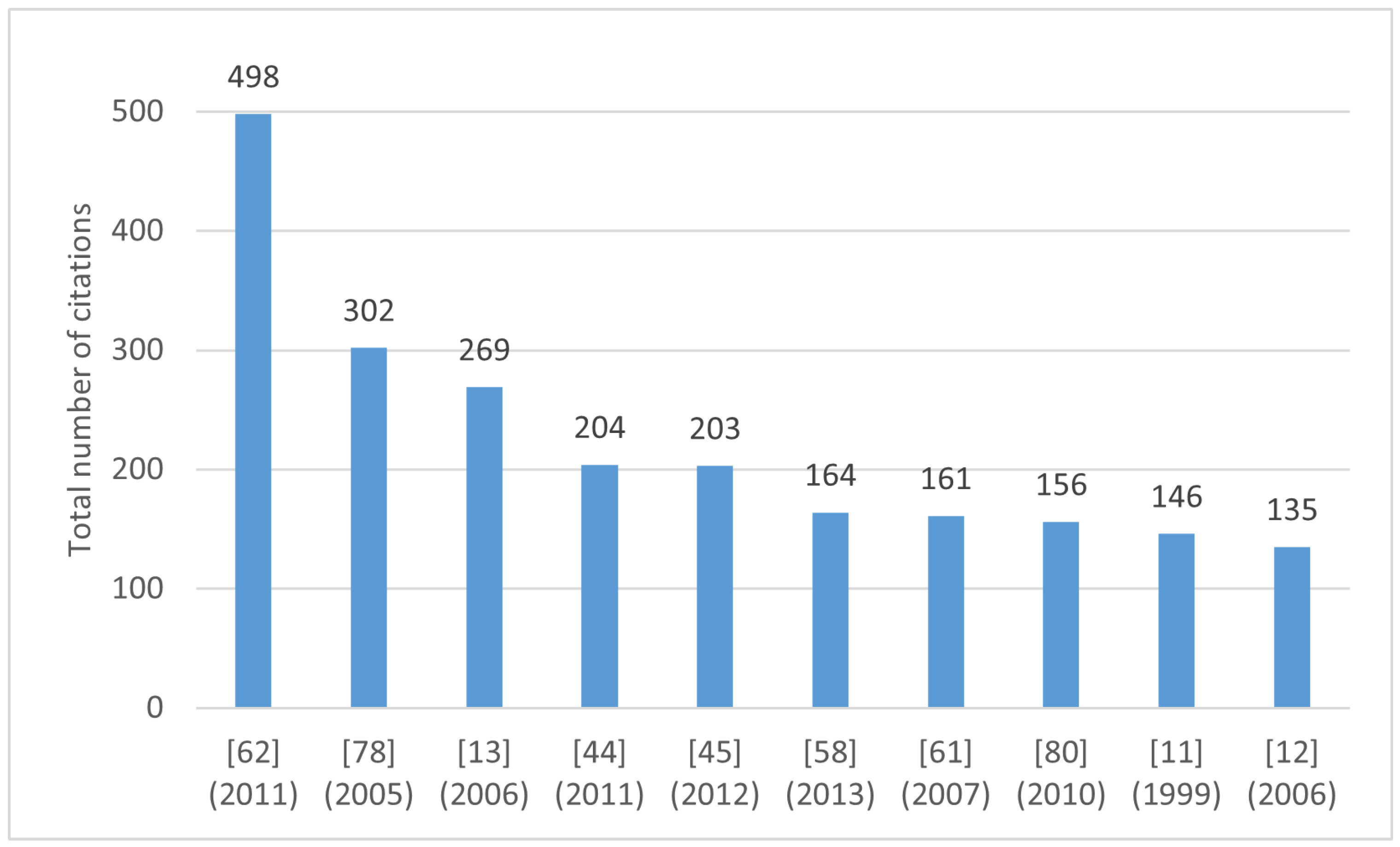
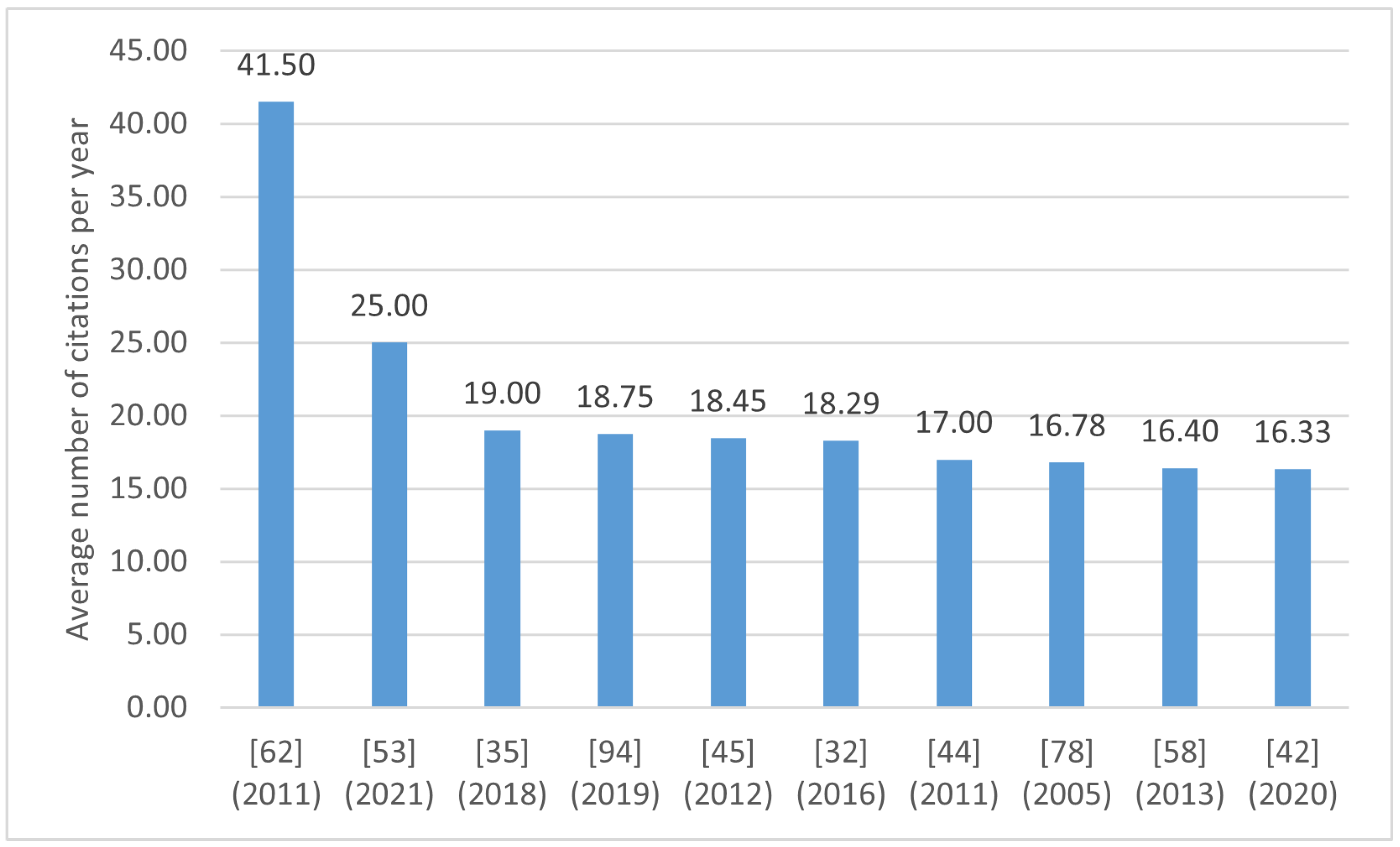
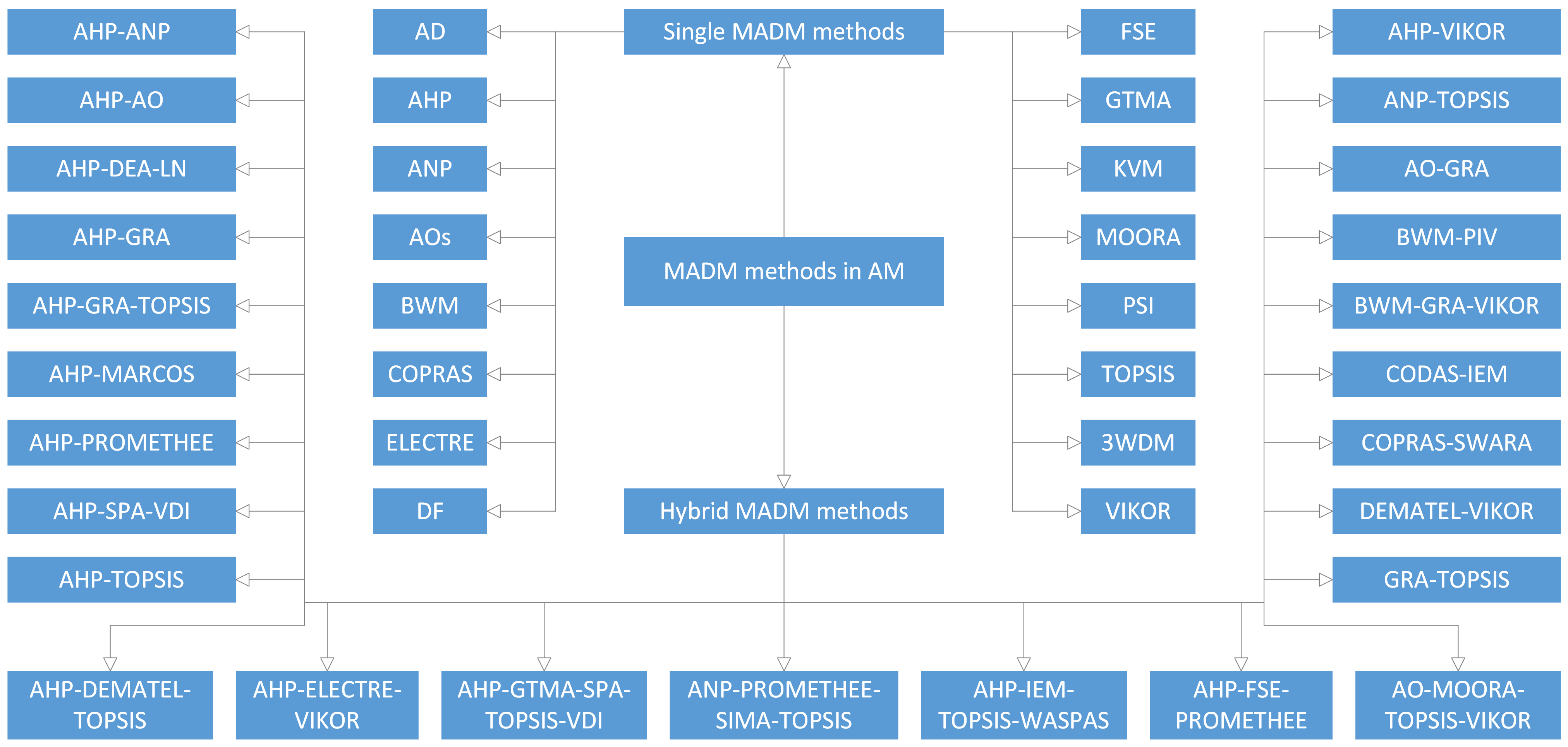

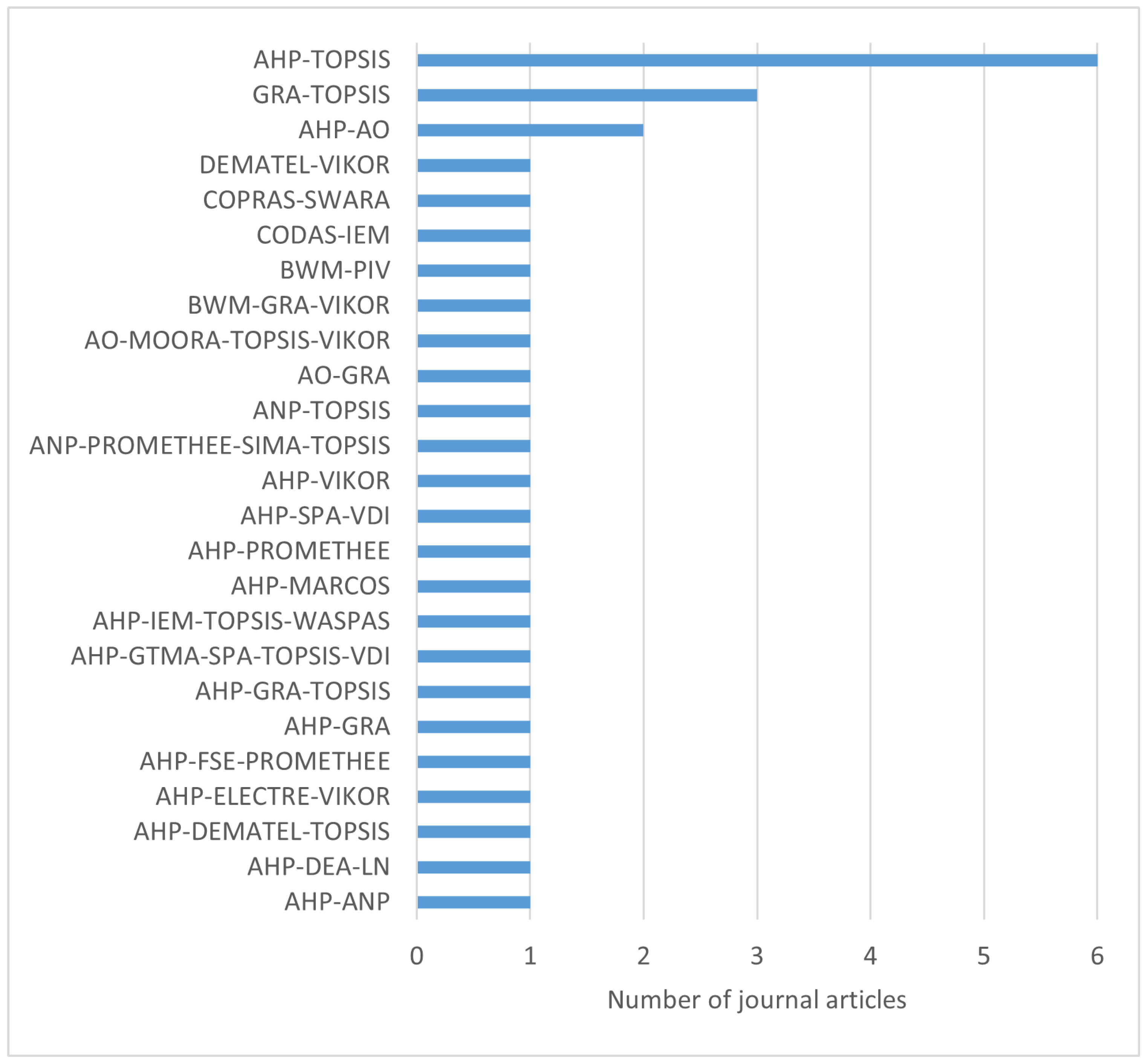
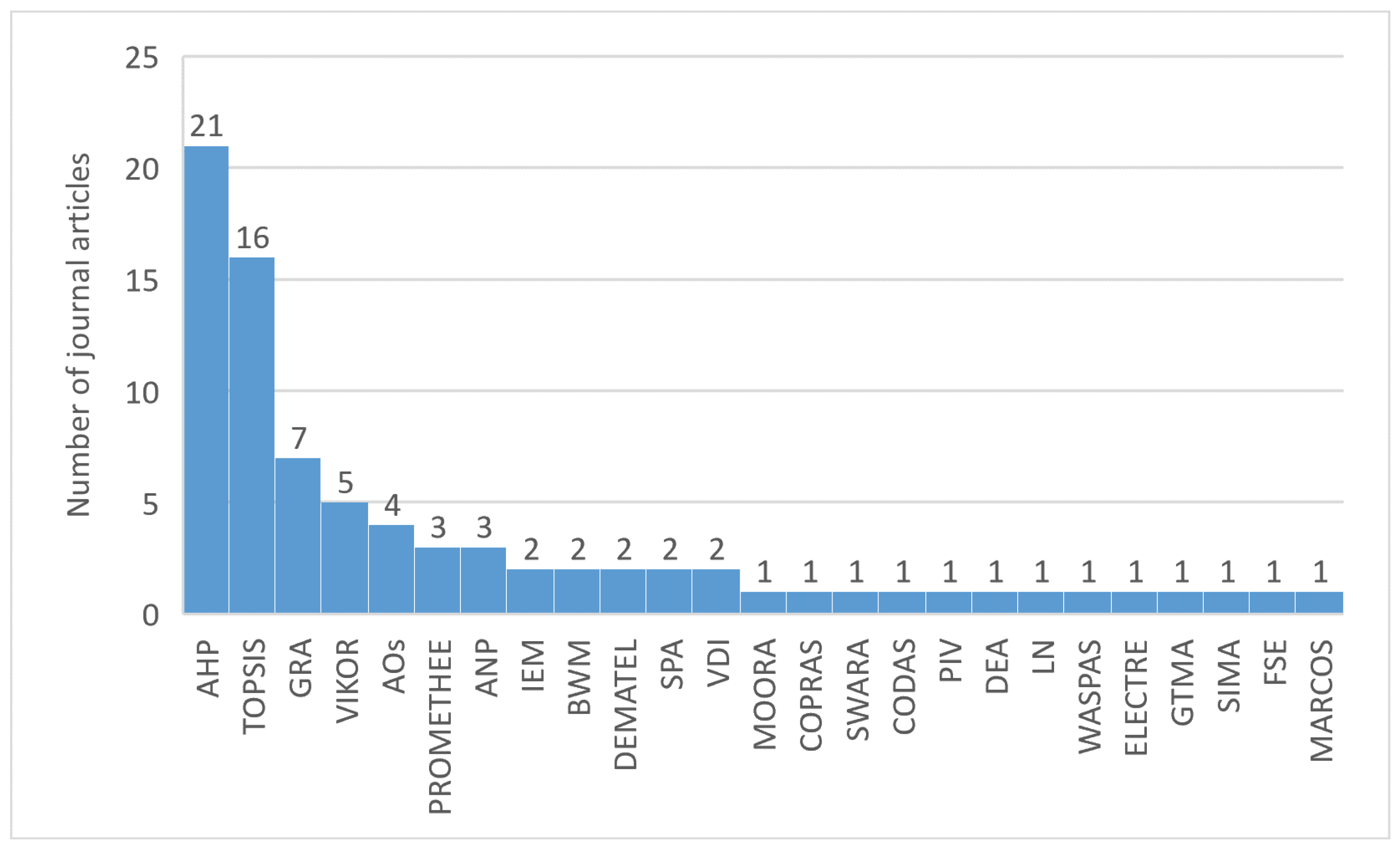
| Article | Year | Journal | Methods | Problems |
|---|---|---|---|---|
| Pham et al. [11] | 1999 | Int J Adv Manuf Technol | AO | Part orientation |
| Byun and Lee [78] | 2005 | Int J Adv Manuf Technol | Hybrid | Process selection |
| Byun and Lee [12] | 2006 | Int J Adv Manuf Technol | AO | Part orientation |
| Byun and Lee [13] | 2006 | Robot Comput-Integr Manuf | AO | Part orientation |
| Rao and Padm [61] | 2007 | J Mater Process Technol | GTMA | Process selection |
| Rao and Patel [80] | 2010 | Int J Prod Res | Hybrid | Process selection |
| Chakraborty [62] | 2011 | Int J Adv Manuf Technol | MOORA | Process selection |
| Vahdani et al. [44] | 2011 | Appl Math Model | TOPSIS | Process selection |
| Ic [45] | 2012 | Robot Comput-Integr Manuf | TOPSIS | Process selection |
| Roberson et al. [58] | 2013 | Virtual Phys Prototyp | DF | Process selection |
| Knofius et al. [32] | 2016 | J Manuf Technol Manag | AHP | Part selection |
| Uz Zaman et al. [35] | 2018 | Robot Comput-Integr Manuf | AHP | Multiple problems |
| Wang et al. [94] | 2019 | Int J Adv Manuf Technol | Hybrid | AM-related assessment |
| Ransikarbum et al. [42] | 2020 | Appl Sci | AHP | Production scheduling |
| Kamaal et al. [53] | 2021 | Prog Addit Manuf | TOPSIS | Parameter optimisation |
| Method | Main Strengths | Main Weaknesses |
|---|---|---|
| AD | Overcomes the subjectivity of interpretation, solves fundamental issues in Taguchi methods | A system design methodology, its robustness for MADM problems requires further validation |
| AHP | Good scalability, easy to use, not data-intensive, possible to measure the consistency of judgments | Not efficient for large-scale problems, not always a solution to the linear equations |
| ANP | Simplifies complex problems and supports dependence and feedback in hierarchy | Relies on judgment and experience of experts, large number of attributes may lead to unwieldy model |
| AOs | Easy to use, provide summary attribute values, each AO has its specific capability | Some AOs are very complicated and their computational cost is relatively high |
| BWM | More consistent pairwise comparisons, mitigates anchoring bias, flexible in group decision-making | Not producing a globally optimal solution, not conducive when the number of attributes is large |
| COPRAS | Not requiring transformation to minimise attributes, allowing to compare and check measuring results | Results may be sensitive to slight variations in the input data |
| ELECTRE | Considers the uncertainty and imprecision of the input data | The decision process and generation results can be difficult to explain |
| DF | Provides an effective way to quantify the trade-offs between attributes | Depends on the empirical data that are difficult to obtain in some problems |
| FSE | Provides an effective approach to describe vague, imprecise, and uncertain information | Depends on subjective judgement, and a large number of attributes could invalidate the model |
| GTMA | Simple, intuitive, and easy to understand and use, considers the interrelations of attributes | Effectiveness and robustness require further demonstration |
| KVM | Simplicity and efficiency of using structured expert knowledge or experience | The knowledge and experience are sometimes difficult to obtain |
| MOORA | Straightforward, efficient, robust, non-subjective, does not need external normalisation | Not efficient when the decision matrix contains a large number of attributes |
| PSI | Not needing the degrees of importance between attributes and the weights of attributes | Not considering relative importance of attributes when generating the ranking results |
| TOPSIS | Simple and efficient, the number of steps is not affected by the number of attributes | Subjective, difficult to keep consistency, not considering the correlation of attributes |
| 3WDM | Prevents premature classification of the alternatives at the edge of acceptance and rejection | Needs decision costs and conditional probabilities that are sometimes difficult to determine as input |
| VIKOR | Can benefit the decision makers who are unstable or have no idea regarding expressing preferences | Needs different attribute weights and an analysis of the effect of weights on compromise solution |
| Hybrid | Can take advantage of the strengths of two or more single methods | Might be challenging to find the best combination of single methods |
| MADM Method | Process Selection | AM-Related Assessment | Part Orientation | Parameter Optimisation | Material Selection | Multiple Problems | Part Selection | Adhesive Selection | Design Selection | Production Scheduling |
|---|---|---|---|---|---|---|---|---|---|---|
| Hybrid | [78,79,80,81,84,85,87,89,90,91,92,93,95,99,104] | [82,88,94,102,110] | [86,98,100,109] | [101,105,108] | [96,97,106,107] | [83,103] | ||||
| AHP | [23,24,25,26,27,28,29,30] | [39,40,41] | [38] | [35,36,37] | [32,33,34] | [31] | [43] | [42] | ||
| TOPSIS | [44,45,46,49,50] | [48,51,52] | [47] | [53,54,55] | [56] | |||||
| AOs | [19,20,21] | [18] | [11,12,13,14,15,16,17] | [22] | ||||||
| VIKOR | [64] | [65,66] | ||||||||
| BWM | [75] | [74] | ||||||||
| COPRAS | [67,68] | |||||||||
| DF | [58] | [57] | ||||||||
| FSE | [59,60] | |||||||||
| PSI | [73] | [72] | ||||||||
| 3WDM | [76] | [77] | ||||||||
| AD | [70] | |||||||||
| ANP | [69] | |||||||||
| ELECTRE | [71] | |||||||||
| GTMA | [61] | |||||||||
| KVM | [63] | |||||||||
| MOORA | [62] |
Disclaimer/Publisher’s Note: The statements, opinions and data contained in all publications are solely those of the individual author(s) and contributor(s) and not of MDPI and/or the editor(s). MDPI and/or the editor(s) disclaim responsibility for any injury to people or property resulting from any ideas, methods, instructions or products referred to in the content. |
© 2023 by the authors. Licensee MDPI, Basel, Switzerland. This article is an open access article distributed under the terms and conditions of the Creative Commons Attribution (CC BY) license (https://creativecommons.org/licenses/by/4.0/).
Share and Cite
Qin, Y.; Qi, Q.; Shi, P.; Lou, S.; Scott, P.J.; Jiang, X. Multi-Attribute Decision-Making Methods in Additive Manufacturing: The State of the Art. Processes 2023, 11, 497. https://doi.org/10.3390/pr11020497
Qin Y, Qi Q, Shi P, Lou S, Scott PJ, Jiang X. Multi-Attribute Decision-Making Methods in Additive Manufacturing: The State of the Art. Processes. 2023; 11(2):497. https://doi.org/10.3390/pr11020497
Chicago/Turabian StyleQin, Yuchu, Qunfen Qi, Peizhi Shi, Shan Lou, Paul J. Scott, and Xiangqian Jiang. 2023. "Multi-Attribute Decision-Making Methods in Additive Manufacturing: The State of the Art" Processes 11, no. 2: 497. https://doi.org/10.3390/pr11020497
APA StyleQin, Y., Qi, Q., Shi, P., Lou, S., Scott, P. J., & Jiang, X. (2023). Multi-Attribute Decision-Making Methods in Additive Manufacturing: The State of the Art. Processes, 11(2), 497. https://doi.org/10.3390/pr11020497






